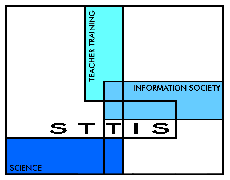Learning
objectives
Pupils should learn:
|
Possible teaching activities
|
Learning outcomes
Pupils:
|
|
Unit 7I Energy resources
Extract from ‘Why are fuels useful?’
|
|
• that fuels are substances which burn to release energy
|
• Review pupils’ understanding of the word ‘fuel’.
• Ask pupils What fuels can you name and what do we
use them for? This leads to a general statement that when fuels burn
they make things happen. Introduce the definition of ‘energy’ as what burning
fuels release to make things happen.
|
• identify some common fuels
• identify fuels as sources of light, heat and movement,
all of which can be called energy
|
|
Unit 7I Energy resources
Extract from ‘How do living things use energy?’
|
|
• that we (and all living things) need energy for every
activity
• that food is the energy source of animals
• that energy is measured in joules
|
• Review with pupils their ideas about food as the energy
resource for plants and animals. This will have been covered at key stage
2, although the word ‘energy’ will not have been used. Link this use of
the word ‘energy’ to its use in situations they have just studied.
• Use pupils’ knowledge of ‘calorie counts’ for slimming
or body-building to introduce the idea of measuring energy input. Introduce
the joule as the unit of energy. Demonstrate that it is quite a small unit,
eg
lifting an apple by 1 metre takes about 1 joule of energy. Look at
the energy ratings of food, eg a chocolate bar. Ask pupils to consider
the question If you ate the chocolate bar how high would you have to
lift the apple before all the energy is used up? Tell them about the
famous physicist John Tyndall, who worked out that the energy he needed
to climb the Matterhorn was contained in a ham sandwich, so that was all
the food he took with him.
|
• know that living creatures need energy to live
• identify the energy contents of a sample of food, eg
from a label
|
|
Unit 8I Heating and cooling
Extract from ‘How do things get hotter or colder?’
|
|
• to recognise heat as energy
• to use a model which associates energy flow with temperature
change
• to make predictions and compare these with observations
• that heat flows as a result of temperature differences
|
• Remind pupils of year 7 work on the heating effect
of burning fuels, where energy was released to cause temperature rise.
Discuss the energy flow associated with the cooling of boiling water and
the warming of ice in the classroom.
• Elicit pupils’ ideas about how heat and temperature
are linked and establish that they are not the same thing. Ask pupils to
predict and observe how the temperatures change when they, eg mix volumes
of hot and cold water, boil different quantities of water with the same
heater.
• Through questioning, help pupils explain why their predictions
matched or did not match the observations they made.
|
• describe the flow of heat (energy) in an everyday
situation of temperature change, eg the cooling of hot food
• relate a flow of heat to change in temperature
• relate a difference in temperature to a flow of heat
• give reasons for their predictions and for any differences
between the predictions and observations
|

 Teaching about energy
Teaching about energy

